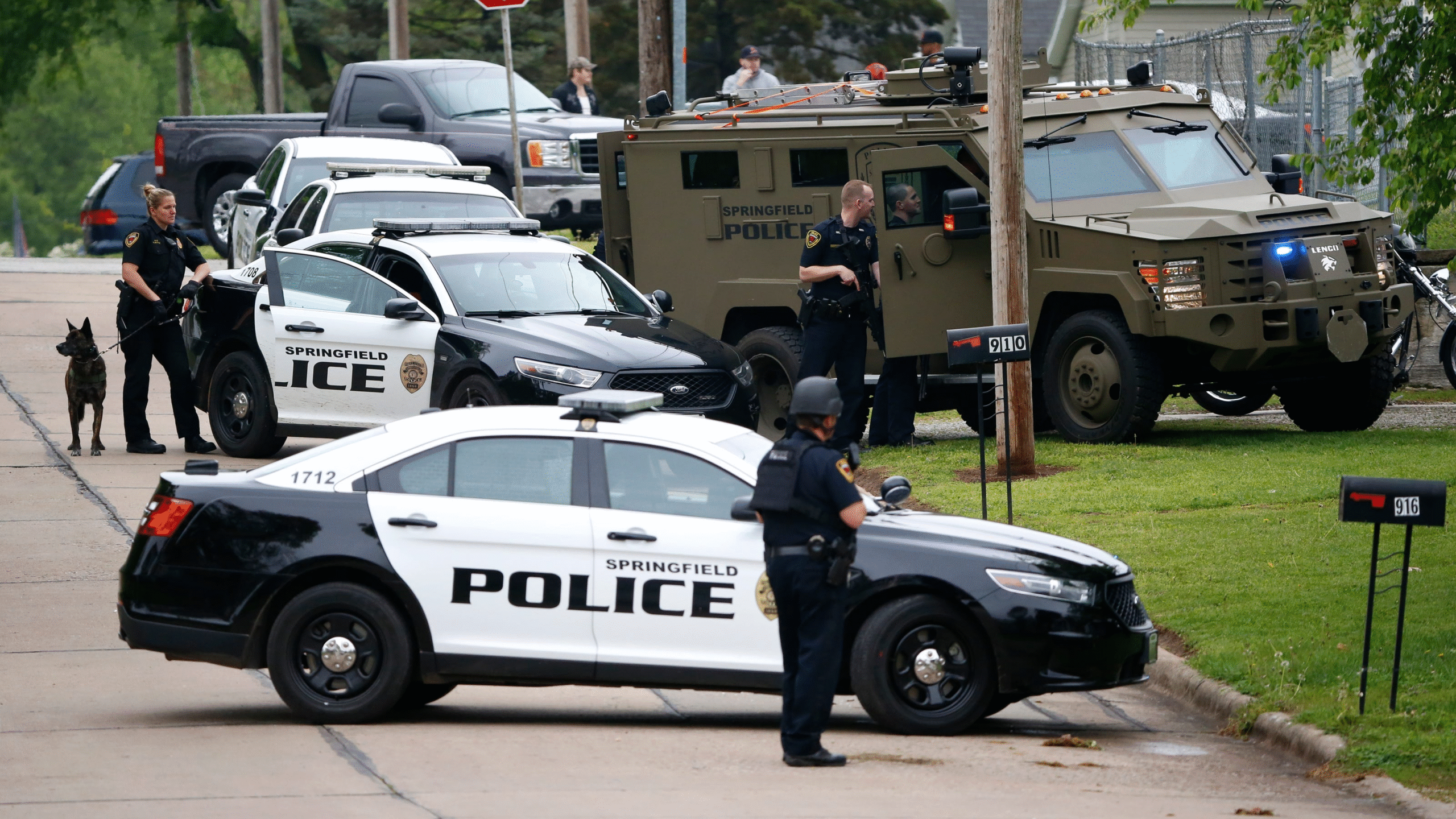Kentucky Walmart Police Presence: A Deep Dive into Safety
When walking through the aisles of a Walmart in Kentucky, it’s hard not to notice a distinct and growing trend the visible presence of law enforcement officers. Whether stationed near the entrance, patrolling the parking lot, or responding to a call, police officers are now a common sight at many Kentucky Walmart locations. While some shoppers find comfort in this security, others view it as unsettling or even excessive.
We’ll examine the history, current state, public opinion, controversies, real-life incidents, and alternative solutions concerning the Kentucky Walmart police presence. This is more than a local issue—it touches on broader themes of safety, policing, retail operations, and civil liberties.
History of Police Presence in Retail Stores
The role of security in retail spaces has evolved dramatically over the last century. Initially, large department stores hired in-house security guards, commonly referred to as “loss prevention officers,” whose primary job was to deter shoplifting and employee theft. These individuals worked behind the scenes, often in plain clothes.
As urban crime increased in the 1980s and 1990s, many retail giants—including Walmart—recognized the need for a more visible deterrent. This led to partnerships with local law enforcement, who began patrolling high-crime areas and responding rapidly to store incidents. Over time, police officers became not just emergency responders but preventative figures in these spaces.
Kentucky, with its mix of urban centers and rural communities, followed this national trend. The state saw a steady increase in police activity around large retail centers, particularly in high-traffic locations like Walmart Supercenters. Today, this presence is not just reactionary—it’s proactive.
The Current Landscape of Kentucky Walmart Police Presence
At many Kentucky Walmart locations, it is now routine to see police cruisers in the parking lot and officers inside the store. These officers are typically not Walmart employees, but rather local police working in coordination with store management, sometimes off-duty and paid through private security contracts.
The presence includes:
- Frequent patrols in store parking lots to deter vehicle theft, vandalism, and drug activity.
- Interior walkthroughs during peak hours or after known incidents.
- Response to in-store disturbances, including theft, fights, or suspicious behavior.
- Occasional stationed officers during holidays or sales events.
Walmart’s rationale is clear: increased police visibility reduces crime and enhances safety for both shoppers and employees. However, the implications go far beyond mere deterrence.
Recent Incident: Berea Walmart Officer-Involved Shooting
On April 29, 2025, a significant incident thrust the Kentucky Walmart police presence into national headlines. In Berea, KY, police responded to a report of a stolen vehicle at the local Walmart. When officers approached the suspects, the driver reversed the car and pinned an officer between two vehicles.
In response, the officer fired into the vehicle. Though no fatalities occurred, both the officer and two suspects were transported to the hospital with minor injuries. The Kentucky State Police (KSP) quickly launched an investigation.
This event sparked a wave of public debate. While some praised the officer’s quick action to defend himself, others questioned whether the situation could have been de-escalated differently. More importantly, it highlighted the intensity of law enforcement’s role in what many consider a community-oriented retail environment.
The Controversy: Is the Kentucky Walmart Police Presence Necessary or Excessive?
The growing police presence at Kentucky Walmarts has not gone unchallenged. The conversation revolves around a few key points:
Arguments in Favor of the Police Presence
- Crime Deterrence: With shoplifting, organized retail theft, and even violent altercations on the rise, many argue that police are a necessary deterrent.
- Customer and Employee Safety: A visible law enforcement presence can help shoppers feel more secure, especially in areas with higher crime rates.
- Quick Response Time: On-site officers can respond to incidents within seconds rather than minutes, reducing the potential for harm.
- Holiday and Event Control: High-traffic events like Black Friday can become chaotic, and police can help maintain order.
Arguments Against the Police Presence
- Atmosphere of Surveillance: Critics argue that seeing police everywhere turns what should be a casual shopping trip into a tense experience.
- Fear Among Minority Groups: There is concern that communities of color may feel targeted or profiled, leading to strained community-police relations.
- Over-Policing of Minor Incidents: Some worry that minor infractions, such as a teenager shoplifting snacks, could escalate into major legal issues due to the presence of law enforcement.
- Lack of De-Escalation Training: Unlike trained security staff, some officers may lack specific retail conflict resolution training.
Impact on Customers and Employees
The Kentucky Walmart police presence affects more than just the rate of theft—it changes the emotional and psychological experience of both shoppers and workers.
Customer Perspective
- Positive: Some shoppers feel safer, especially when visiting at night or with children.
- Negative: Others feel uncomfortable, particularly those with previous negative experiences with law enforcement. The visible police presence may signal to them that the area is dangerous, which might discourage repeat visits.
Employee Perspective
- Supportive: Many workers appreciate having backup when dealing with aggressive or non-compliant customers.
- Concerned: Others feel nervous or micromanaged, especially when interactions between police and customers become confrontational.
The emotional atmosphere in these stores can vary significantly depending on location, demographic, and recent incidents.
Legal and Ethical Considerations
The integration of public police officers into private retail environments like Walmart brings up a number of complex legal and ethical questions:
- Liability: If a customer is injured during a police-involved incident on Walmart property, who is liable—the officer, the department, or Walmart itself?
- Privacy Concerns: Are shoppers’ rights being respected when officers conduct searches or question individuals without clear cause?
- Use of Force: What protocols exist for when an officer uses force in a non-criminal, retail environment?
- Transparency: Are communities informed when officers are stationed at local stores? Are there accountability measures?
These questions are not easy to answer but are vital in creating a fair and effective security system for all parties involved.
Exploring Alternatives to Kentucky Walmart Police Presence
While law enforcement can play a critical role in retail security, experts and community leaders often suggest alternative or complementary strategies that may be more appropriate in certain situations.
1. Advanced Surveillance Technology
- High-definition cameras, facial recognition, and AI-powered behavior monitoring can help identify threats early.
- These tools can operate discreetly without making customers feel “watched” in the traditional sense.
2. Trained Private Security
- Security officers trained in de-escalation and customer service may provide a less intimidating presence while maintaining order.
3. Better Store Layout and Lighting
- Strategic store design with open sightlines can reduce blind spots where theft or aggression might occur.
- Well-lit parking lots deter criminal behavior.
4. Community Policing Programs
- Hosting safety seminars, town halls, or meet-and-greets with local law enforcement can build relationships outside of crisis moments.
5. “See Something, Say Something” Initiatives
- Empowering customers and employees to report suspicious activity creates a shared sense of responsibility for public safety.
Case Studies: Comparing Other States
Other states have experimented with different approaches to Walmart security:
- California: Some cities have banned off-duty officers from working as retail security to prevent conflict of interest.
- Texas: Walmarts in urban centers utilize a hybrid model of surveillance tech and community officers.
- New York: Community watch groups sometimes replace traditional police presence in areas with strained police relations.
These models provide valuable lessons that Kentucky could study to improve its own practices.
Conclusion of Kentucky Walmart Police Presence
The Kentucky Walmart police presence is a reflection of broader societal challenges: balancing safety, public trust, retail responsibility, and individual rights. While law enforcement undoubtedly plays a vital role in maintaining peace and order, the presence of uniformed officers inside a local retail store can carry unintended consequences.
As the situation in Berea demonstrated, interactions between police and the public in retail spaces can quickly escalate. These scenarios call for careful training, clear policies, and, above all, open communication between all stakeholders—law enforcement, retail managers, employees, and community members.
Ultimately, Kentucky must continue to evaluate whether the current model serves the best interests of the community. With evolving technologies, social norms, and community expectations, the conversation about police presence in Walmart is far from over.




Post Comment